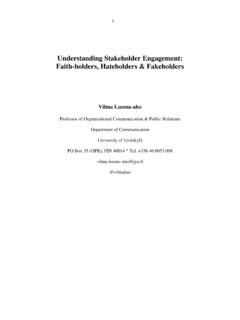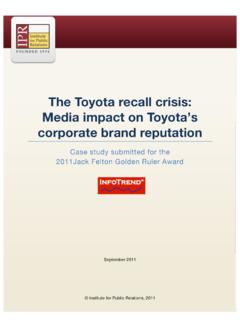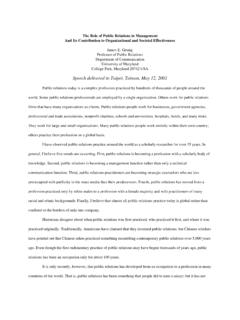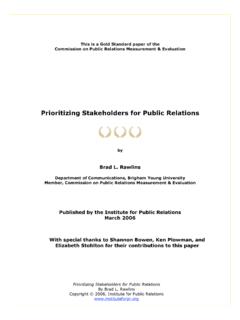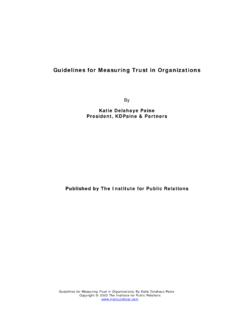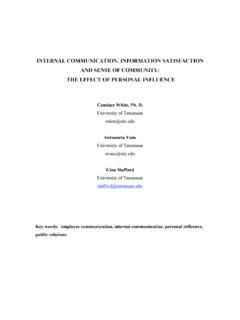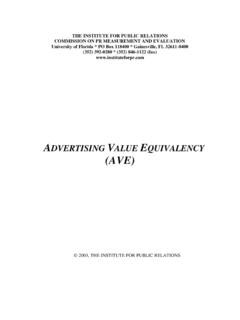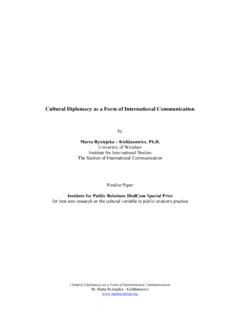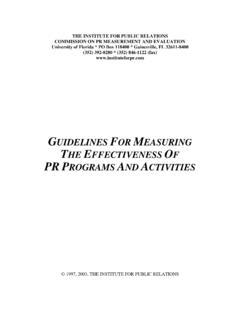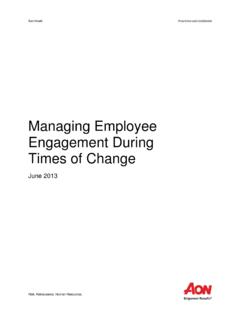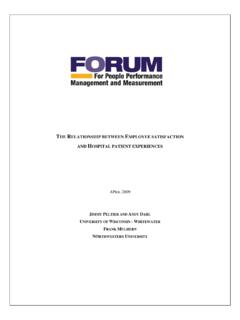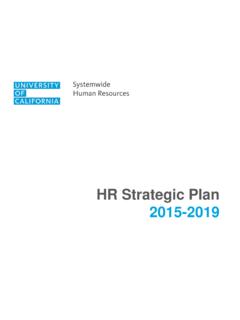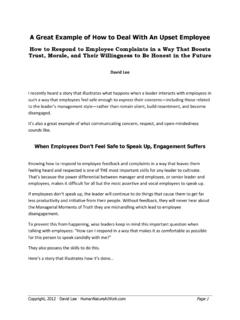Transcription of Measuring the Impact of Leadership Style and …
1 1 Measuring the Impact of Leadership Style and employee empowerment on perceived organizational reputation by Linjuan Rita Men Doctoral Student School of Communication University of Miami 5100 Brunson Drive Coral Gables, FL 33146 (973)-818-8801 Submitted to the Institute for Public Relations For the 2010 Ketchum Excellence in Public Relations Research Award 2 Abstract The current study examines the Impact of organizational Leadership on public relations effectiveness from an internal perspective. Specifically, it builds links between Leadership Style , employee empowerment , and employees perception of organizational reputation .
2 The results showed that transformational Leadership positively influences employees perception of organizational reputation , not only directly but also indirectly, through empowering employees. Transactional Leadership represented by contingent reward behavior has a significant negative direct effect on employees perception of organizational reputation . Transformational leaders are more likely to delegate power to employees and involve them in decision making than transactional leaders. Employees who feel more empowered in terms of competence and control tend to have a more favorable evaluation of organizational reputation .
3 Significant theoretical and practical implications of the findings are discussed. Keywords: Leadership Style , employee empowerment , organizational reputation , internal communication 3 The two-decade Excellence Study led by James E. Grunig and his colleagues showed that internal characteristics, such as a participative organizational culture, organic structures, symmetrical communication, and gender equality are critical organizational determinants for best practices in public relations. These antecedent factors not only provide a hospitable environment for excellent external public relations practice, but also facilitate internal communication with employees, which affects employees work attitudes and behavioral outcomes (L.)
4 A. Grunig et al., 2002). As an effort to extend the list of organizational contextual characteristics on excellent public relations, the present study examines how organizational Leadership Style and behaviors influence public relations outcomes. According to Yukl (1994), Leadership is the process of influencing followers. Leaders play an important role in the attainment of organizational goals by creating a climate that would influence employees attitudes, motivation, and behavior. However, as noted by Aldoory and Toth (2004), despite the extensive research on the construct of Leadership in the disciplines of management, business, and marketing, a strong scholarly discourse on Leadership is lacking in public relations (p.
5 157). Recently, initiatives have been undertaken to examine the characteristics of Leadership in public relations ( , Choi & Choi, 2008; Jin, 2010; Werder &Holzhausen, 2009). Nevertheless, little scholarly attention has been paid to understand whether and how Leadership , as an organizational antecedent factor, influences public relations effectiveness. Management scholars ( , Bass, 1999; Castro, Perinan & Bueno, 2008) have demonstrated that effective Leadership acts through empowering employees to engage them and improve work outcomes. Although not much literature exists on empowerment in public 4 relations, the concept is not new in public relations research.
6 In the Excellence Study, J. E. Grunig (1992) distinguished holding power over others and empowerment of everyone as asymmetrical and symmetrical. Previous studies in public relations on empowerment have mainly focused on two approaches: first, empowerment of public relations functions ( , why public relations managers should be part of or have access to the dominant coalition, and how to get them seated at the corporate decision-making table) (J. E. Grunig, 1992; L. A. Grunig et al., 2002; Men, 2009); and, second, empowerment of minorities in public relations (Aldoory, 2003).
7 However, research on how empowerment of strategic publics contributes to the effectiveness of public relations has been sparse. As noted by many public relations scholars ( , L. A. Grunig et al., 2002, Ni, 2006, Rhee, 2004; White et al., 2010), among the different strategic publics that organizations are facing, employees are no doubt the ones with whom organizations have the closest connection. Employees are spokespersons and ambassadors who represent organizations in the face of strategic publics (Rhee, 2004). With the aid of social media, employees are becoming empowered, constructing their own information networks and dialogues.
8 With the ubiquity of information, people talk about companies both inside and outside (Edelman, 2010). Effective employee communication, which nurtures favorable employee attitudes, contributes not only to job satisfaction, organizational performance, and achievement of organizational goals ( , Bartoo & Sias, 2004; Rosenfeld, Richman, & May, 2004; White et al., 2010; Zucker, 2002), but also helps protect organizational reputation in a turbulent environment because employees are viewed as credible sources to external stakeholders ( Grunig et al., 2002; Men, 2011; White, 2010).
9 5 As an effort to extend the list of contextual characteristics on excellent public relations proposed by the Excellence team, and to add to the body of knowledge on internal communication, the present study examines how organizational Leadership Style and employee empowerment Impact internal public relations effectiveness, specifically, the perceived organizational reputation by employees. By building links between organizational reputation and the two internal antecedent factors, organizational Leadership and employee empowerment , the current work will provide new empirical evidence on how organizational context affects public relations outcomes and extend the list of internal characteristics of excellent public relations.
10 As an extensive study to measure organizational reputation , the findings will also enrich the literature on public relations evaluation. In addition, the thorough investigation into organizational Leadership styles and employee empowerment will fill the research gap on Leadership and empowerment study in public relations. Pragmatically, the present research will provide significant implications for both public relations professionals and organizational leaders on how to form favorable employee attitudes and evaluation, which contribute to organizational effectiveness.
